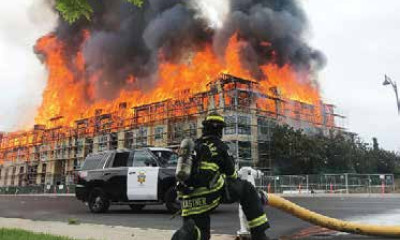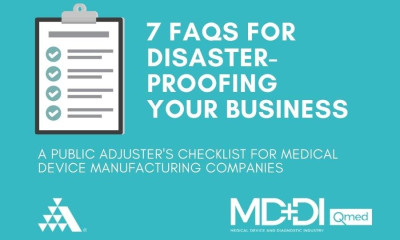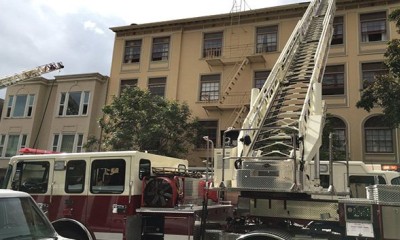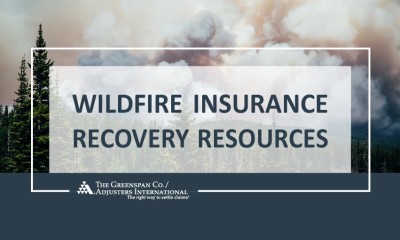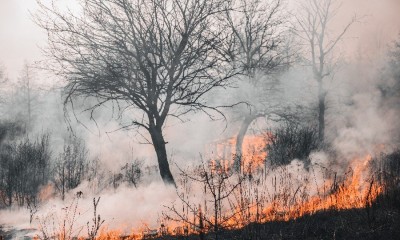American Vineyard Magazine
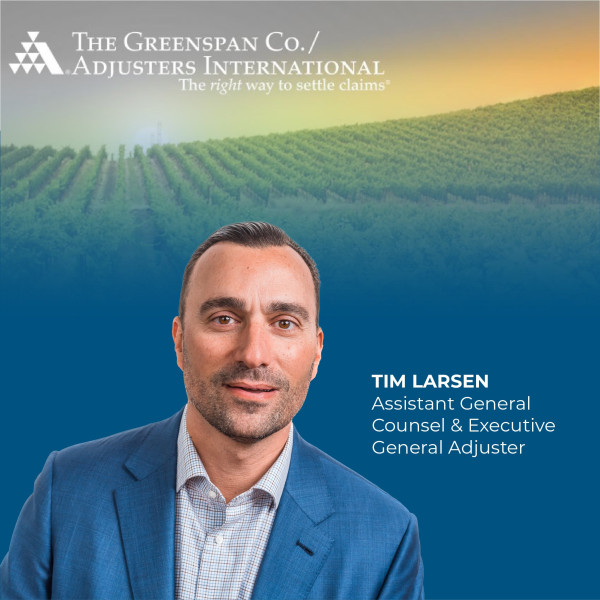 Viticulture on the West Coast is increasingly under threat from wildfires and other forms of extreme weather. As those in the industry take action to prepare for weather-related incidents, they must also take the critical steps needed to ease recovery in the aftermath of such disasters. Making sure that your business is protected by adequate insurance coverage can make all the difference between crushed operations and successful reopening.
Viticulture on the West Coast is increasingly under threat from wildfires and other forms of extreme weather. As those in the industry take action to prepare for weather-related incidents, they must also take the critical steps needed to ease recovery in the aftermath of such disasters. Making sure that your business is protected by adequate insurance coverage can make all the difference between crushed operations and successful reopening.
Among vineyards and wineries, fire loss insurance claims are extremely common. For an average business, navigating the long and tedious recovery from property loss is difficult in and of itself. For grape growers and winemakers, the multiple stages of production add an extra layer of difficulty.
This is why preparation and mitigation are so crucial for businesses located in in high wildfire risk areas. Securing the proper insurance coverages is the most effective way to ensure you will have the resources needed to bounce back.
Checking Your Coverages
The first and most important step in pre-disaster planning is looking at your insurance coverages and making sure they are sufficient. No matter how good you or your public adjuster may be at negotiating, the insurance carrier will only replace what is insured under your policy. Every little detail matters, from the tanks to the trellises.
Vineyard and winery insurance coverages are a blend of agriculture and commercial policies. From buildings and farm equipment to the multistage production process of the grapes, it is essential to double-check that every part of this chain is covered – because it might not be, and the last thing you want is to be surprised by how little is in your settlement check.
The major items, like buildings and farm equipment, are usually covered under a standard commercial policy. But other important things may be overlooked and underinsured.
For example, what we often see missing in policies are coverage on the trellises, sprinkler systems and fencing. While these items may fall under a nominal amount of coverage, the reimbursement is often not enough to compensate for their value.
When reviewing your policy, take a special look at the coverage for the vineyard’s infrastructure, including the tanks and irrigation lines. This is another type of item that is commonly underinsured. The more specific your insurance coverage is, the better you can protect the assets that are so essential to your operation. Remember, when these items are damaged, the insurance carrier will only replace what is covered.
For example, crop insurance will cover the stock on your vines, bushes, and trees. But everything changes the moment the fruit is harvested. While grapes on the vine are protected under a crop coverage, grapes that have been picked and are stored in a bin for processing fall under commercial stock coverage.
Valuation of the product occurs at each stage of the production, from farm to table, and the cost associated with each stage is determined differently. To ensure that you are compensated for the true value of your merchandise, having a plan in place to document this process accurately is essential to your financial recovery.
Infrastructure and equipment fall under separate endorsements as well. Equipment is endorsed under your commercial policy’s Business Personal Property (BPP) insurance that covers equipment, furnishings, and stock, such as picked grapes in a bin. Infrastructure on the vineyard or at a winery is endorsed under your Building Coverage, which is a different commercial policy. It typically insures you for the cost to repair or rebuild the damaged building.
To ensure that they are up to date on their coverage, winemakers and growers should be checking their insurance coverage twice a year. Too often, business owners find out that they are underinsured only after their property was damaged by a disaster. Even if your policy has an inflation guard and it renews every year, it may be insufficient. Rising construction costs combined with demand surges can too easily leave you in the lurch.
The Coinsurance Catch
One of the first things to look out for in your policy is a coinsurance clause, which is common in commercial policies. Coinsurance requires policyholders to insure a minimum percentage of their property’s value in order to receive full coverage for their claims. Insurance companies typically require 80 percent of the property’s value to be covered, but the exact percentage can vary depending on the insurer and the specific property.
For instance, under a 100 percent coinsurance clause, the business owner is responsible for insuring 100 percent of the property’s value. This means that, if your property is worth $5 million, your coverage limit cannot be less than 100 percent of $5 million. If you obtained insurance for only 50 percent of the property’s value, despite the clause requiring 100 percent coverage, your payout will only reflect 50 percent of the loss. According to the example above, your compensation will be $2.5 million minus any deductible, leaving you responsible for the remainder.
Many business owners are not aware of the coinsurance clause or don’t understand the burden it can pose after experiencing a loss. If you do have a coinsurance clause in your policy, adding an Agreed Value endorsement will waive all coinsurance penalties and help you get compensated to the full limit should a total loss happen.
In addition to reviewing your endorsements, make sure that any upgrades to your business are reflected in your policy. If you have purchased new equipment or machinery or did additional construction on a building, that should be noted. It’s a good idea to conduct a policy review with your broker to determine you are insured to the appropriate value.
Protecting Your Employees
If you experience a loss that stalls your operations, there are insurance policies that will protect your employees for a set amount of time, allowing them to continue to get paid despite the business being closed.
After experiencing a loss and having operations seized, it is not uncommon for panicked business owners to begin laying off employees in order to reduce costs. However, retaining key employees at a time when hiring demands are high is critical to a successful recovery. If your policy has coverage for ordinary payroll, it will enable you to continue pay your staff during this crucial period.
It is important to remember, however, that insurance carriers typically do not recognize hourly employees as essential to your business and do not reimburse retaining them on the payroll. This is why identifying and retaining key employees who are critical to reopening your business sometimes also requires negotiation with the insurance company.
Lastly, don’t be afraid to enlist the help of experts, who can partner with you to negotiate with the insurance company on your behalf. As the policy owner, you should feel empowered to dictate what the business looks like when reopening – not your insurance carrier.
Recovery after a disaster is stressful but preparing in advance can ease the pain – as can working with a trusted disaster recovery team.
To read the full article, click here.



